You’re ready to scale your business, but you’re unsure of the cost implications of hiring a Chief Revenue Officer (CRO).
Don’t fret! In this article, we’ll unravel the mysteries behind budgeting for a high-impact CRO hire.
We’ll cover salary ranges, equity and bonus structures, additional costs, and more.
Let’s dive in to ensure you’re informed and prepared for this critical investment.
Table of Contents
ToggleKey Takeaways
- A CRO is responsible for aligning revenue-related activities, navigating market trends, and shaping company culture around client success.
- The average salary range for a CRO is $150K to $400K or more annually, with additional expenses such as benefits and training costs.
- Equity distribution and bonus structure should be carefully balanced to motivate the CRO and align with company goals.
- Hiring a high-impact CRO can drive substantial growth, increase revenue streams, and identify new opportunities for long-term success.
Understanding the Role of a Chief Revenue Officer (CRO
It’s crucial to fully understand the role of a Chief Revenue Officer (CRO) before you start budgeting for this high-impact hire. A CRO isn’t just any executive; they’re the driving force behind your company’s income. They cultivate revenue by aligning all revenue-related activities – marketing, sales, customer relationship management, and pricing strategies.
Think of them as the coxswain steering your corporate vessel toward profitable waters. They navigate market trends, anticipate opportunities and risks, and adjust course accordingly. It’s their responsibility to ensure that each department is working in harmony towards shared revenue goals.
Analyzing performance metrics is another key aspect of their job. Yes, they’ll delve into data and extract meaningful insights about customer behavior and market dynamics that can inform strategy.
A CRO also has an essential role in shaping your company culture around client success. They’re constantly fostering a customer-centric approach within the team so that everyone’s efforts contribute directly or indirectly to revenue growth.
Importance of a CRO in Your Business
You’ll quickly realize the significance of a key role in your company when revenue starts to skyrocket. This is the moment you appreciate having a Chief Revenue Officer (CRO) on board. They don’t just bring in more business, they also ensure that it’s sustainable and profitable.
Your CRO doesn’t operate in isolation. They interact with marketing, sales, customer service, and even product development teams to create an integrated approach towards revenue generation. They’re able to analyze market trends, define new opportunities for growth and align these with your company’s strategic goals.
But their impact goes beyond numbers. A competent CRO can foster a culture of accountability within your team by establishing clear performance metrics and holding everyone responsible for achieving them. This not only improves efficiency but also empowers your employees.
Moreover, the right CRO can anticipate risks that could potentially derail your business’ financial trajectory. By identifying these threats early, they give you ample time to strategize and mitigate them effectively.
In essence, investing in a high-impact hire like a CRO might initially seem costly but it ultimately pays off by ensuring your company’s financial health and long-term success.
Determining the Salary Range for a CRO
You’re considering hiring a Chief Revenue Officer (CRO), but what should you expect to budget for this key role? It’s crucial to understand the average CRO salaries and the various factors that can influence these pay scales.
In the following discussion, we’ll delve into these details, providing an analytical and detailed perspective on possible remuneration, ensuring you’re armed with the necessary information to make an informed decision.
CRO Salary Averages
On average, a CRO’s salary can vary greatly depending on the industry and location. For instance, in tech-centric regions like Silicon Valley, you’ll find higher averages due to the high demand for revenue growth expertise. But don’t let that scare you off; remember, it’s all relative to cost of living and market conditions.
Diligently research your specific industry norms and geographical trends before setting a figure. You’re looking at a broad range here – anywhere from $150K up to $400K or more annually. That’s not even factoring in bonuses or equity shares which could significantly add to a CRO’s total compensation package.
Factors Influencing Pay
There’s a myriad of factors that influence pay, such as experience level, size of the company, and its revenue.
You’ll find that a CRO with extensive experience will command a higher salary than one just starting out.
The bigger the company, the more complex the revenue optimization strategies; hence, larger companies tend to offer more competitive compensation packages.
Similarly, a company’s financial health plays an instrumental role in determining pay scales. If your firm has robust revenues and is scaling up operations rapidly, you’re likely to attract top-tier talent with competitive remuneration.
It’s essential to analyze these variables when budgeting for a high-impact hire like a CRO – remember, getting it right could well be pivotal for your business success!
Deciding on Equity and Bonus Structure for a CRO
As you navigate the complex terrain of compensation structures for a Chief Revenue Officer (CRO), you’ll need to grapple with key aspects. These include equity distribution, bonus calculation methods, and performance-based rewards.
Understanding how to distribute equity in a way that motivates your CRO while ensuring fairness can be challenging yet crucial.
Deciphering which bonus calculation methods best align with your company’s goals and establishing meaningful performance-based rewards require astute analytical insight and careful detailing.
Equity Distribution
Equity distribution is often a key factor when budgeting for a high-impact hire like a CRO. You’ll need to consider the potential growth of your company along with its current value. It’s important to balance this against the immediate cost savings you’d receive from offering equity instead of a higher salary.
Remember, equity isn’t just about money—it’s also about ownership and commitment. Giving your CRO a stake in the company can foster loyalty and drive them to work harder for its success. However, you’ve got to be careful not to dilute existing shares too much or unfairly disadvantage other employees.
Bonus Calculation Methods
When determining bonus calculation methods, it’s crucial to take into account both the performance of the individual and the success of the company. You can’t simply rely on generic formulas; you need a tailored approach. Consider objective factors like revenue growth or profitability, but don’t overlook qualitative aspects such as leadership skills or customer satisfaction rates.
It’s also essential to balance short-term results with long-term sustainability. An effective method might involve sliding scales or tiered bonuses, rewarding not just attainment but surpassing targets. This can drive productivity while still maintaining fiscal prudence.
Performance-Based Rewards
Performance-based rewards are a fantastic way to motivate employees and align their goals with the company’s, but they’ve got to be implemented properly. You need to ensure that the metrics used for evaluation truly reflect the employee’s contribution towards achieving business objectives. It’s not just about hitting targets; it’s about how these targets contribute towards overall growth.
Remember, a poorly designed performance-based reward system can lead to undesired behaviors like short-termism or unhealthy competition among teammates. The trick is in balancing individual and team awards, thus promoting collaboration while rewarding personal effort.
Your goal should be fostering an environment where everyone feels valued for their unique contributions, boosting morale and productivity simultaneously. It’s a delicate balance you must strike for optimum results.
Additional Costs Associated With Hiring a CRO
It’s important to remember that there’ll be other expenses involved in hiring a CRO beyond their base salary, such as benefits, bonuses, and training costs. These additional outlays can significantly inflate the overall cost of bringing on a high-impact hire like a CRO.
Consider employee benefits. You’re not just paying for the CRO’s time and expertise; you’re also covering health insurance, retirement contributions, paid vacation days, and potentially more. These perks are essential in attracting top talent but should be factored into your budgeting.
Bonuses too can add up quickly. Performance-based rewards incentivize your CRO but they also represent an unpredictable expense that could impact your financial planning negatively if not adequately prepared for.
Then there’s training costs. Even experienced hires may need some form of orientation or specific training to align with your company culture and operational procedures. Depending on its extent, this process might entail significant expenditure.
Don’t overlook these hidden costs when calculating the price tag of a new CRO hire. Understanding all aspects of what it really costs to bring them onboard will enable you to make informed decisions for your business’s financial health.
The Value of a High-Impact CRO Hire
You’ll quickly see the worth of a top-tier revenue officer in their ability to drive substantial growth for your business. A high-impact CRO doesn’t just cover their own salary, they exponentially increase revenue streams, resulting in overall profit increases that far outstrip their hiring cost.
Your CRO won’t be idle. They’ll analyze markets and competitors, develop strategic plans, and implement changes that can drastically improve your sales performance. They have the know-how to streamline your operations, enabling faster decision-making and more efficient use of resources. This isn’t just about bringing money in; it’s also about optimizing how you work.
But let’s get specific here. The real value lies in their ability to identify new opportunities within existing customer bases or unexplored markets. They’re experts at patron retention, upselling strategies, and product development ideas based on consumer feedback or market trends.
Having a high-impact CRO onboard means you’re not just growing; you’re evolving with purpose under expert guidance. Hiring a top-tier revenue officer might seem like a significant expenditure initially but remember – this is an investment designed for long-term gains that will position your company favorably for future success.
Creating a Budget Plan for a CRO Hire
Before diving into the hiring process, you’ll need to devise a financial strategy that accounts for the addition of this pivotal role to your team. Understand that hiring a Chief Revenue Officer (CRO) isn’t merely an expense, but rather an investment towards accelerating your company’s growth trajectory.
Begin by outlining the anticipated remuneration package. Keep in mind that a seasoned CRO doesn’t come cheap — their expertise commands top dollar. You’re not just paying for skills, you’re investing in years of experience and industry knowledge that can steer your company towards revenue-driven success.
Apart from salary considerations, factor in additional costs such as bonuses, equity options, and other benefits which are commonplace at this level of hire. Don’t overlook recruitment costs either; tapping into professional networks or engaging executive search firms may be necessary to attract top talent.
Next up is budgeting for resources needed to empower your CRO. From tools and software to building out their team, these capital expenditures should be accounted for in your financial plan.
Lastly, integrate these cost implications into your overall business budget. This helps ensure you aren’t stretching finances too thin while still making room for this high-impact hire.
Evaluating the Return on Investment of a CRO Hire
Assessing the return on investment for a Chief Revenue Officer (CRO) isn’t just about crunching numbers; it’s also about gauging their influence on your company’s revenue growth and strategic direction.
It’s vital to consider the qualitative aspects of their role. The CRO’s primary responsibility is enhancing revenue performance. Yet, it’s not all black-and-white. You’ve got to look beyond sales figures and profit margins. You should ask: Has the CRO brought in new high-value clients? Have they forged strategic partnerships that open up new market opportunities? Are they developing robust sales strategies that ensure long-term profitability?
Next, evaluate how the CRO has impacted your team dynamics. A good CRO doesn’t just drive revenue; they cultivate a culture focused on growth and innovation.
Lastly, consider the cost of having no CRO at all. If you’re muddling through without clear leadership in revenue generation or strategy, you may be missing out on valuable opportunities for growth.



